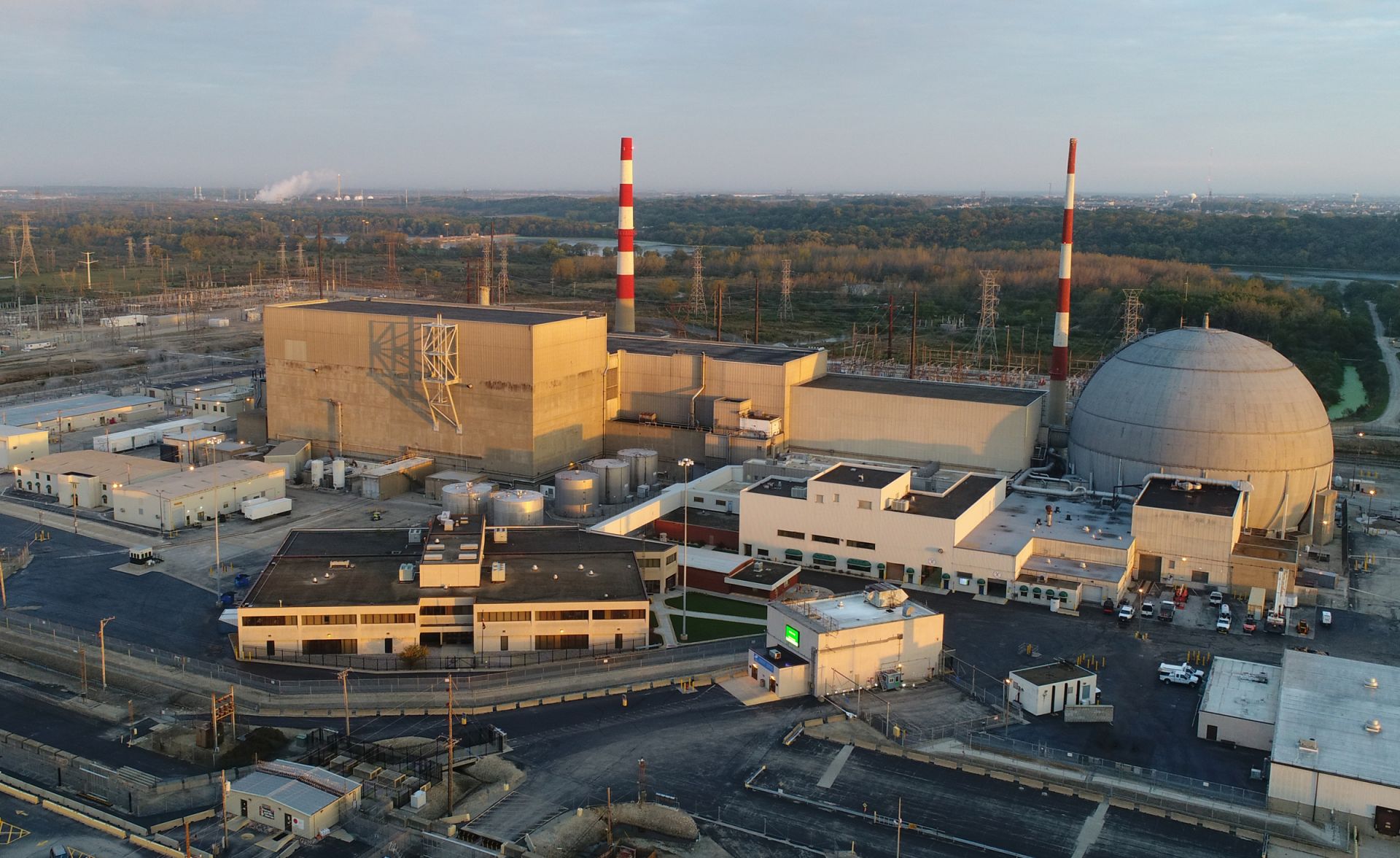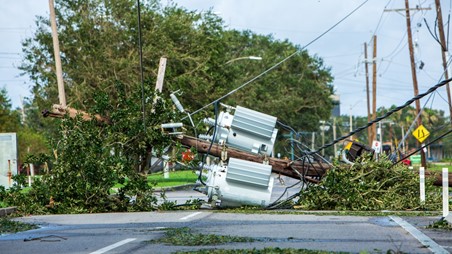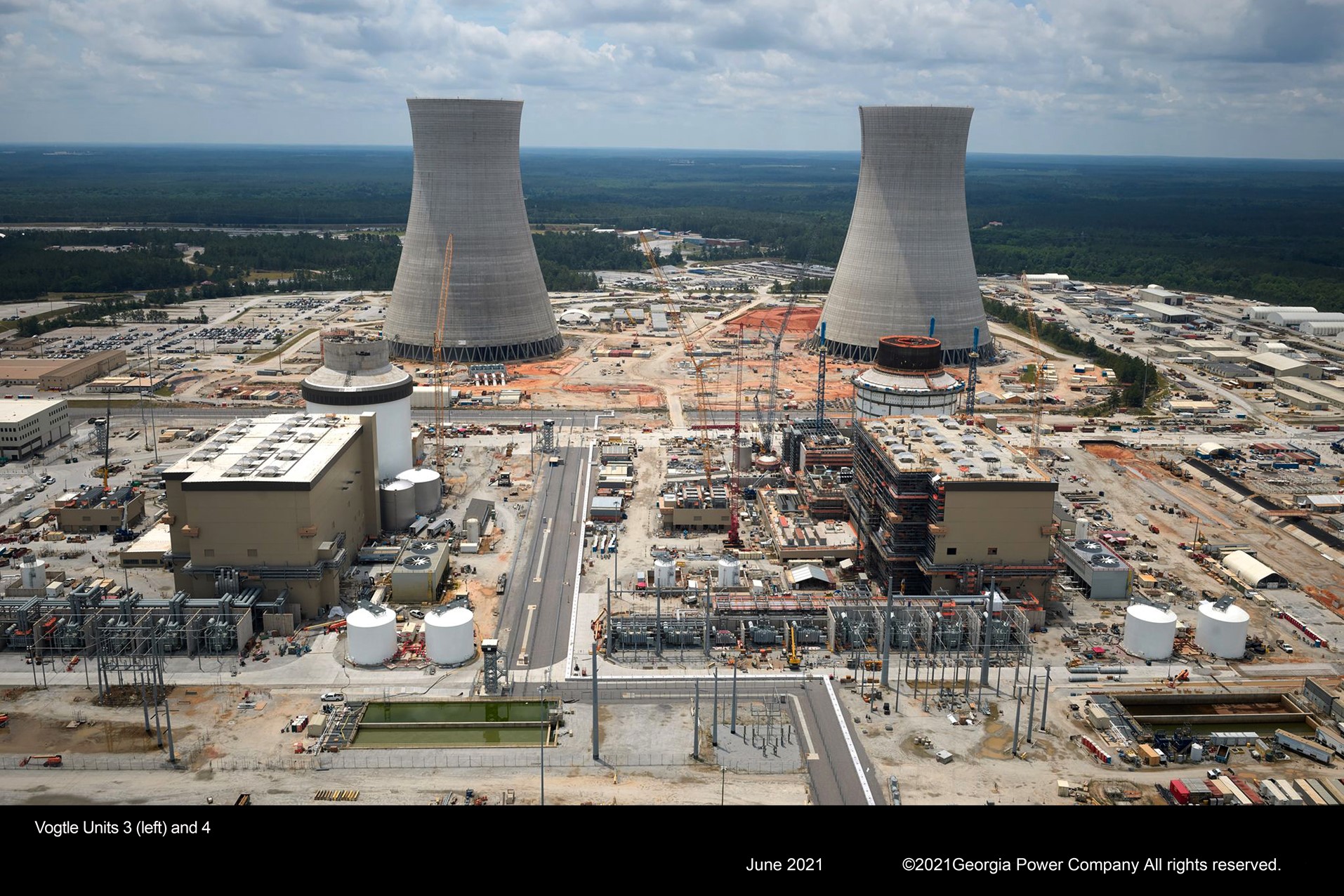Participants in a site evaluation of the Vermont Yankee nuclear power plant. (Photo: Steve Maheras/PNNL)
Over the past decade, the Department of Energy has been collecting data on nuclear power plants to help plan for the eventual removal of spent nuclear fuel from the sites, performing site evaluations to assess transportation infrastructure and the transportability of spent fuel.
The Dresden nuclear power plant
With essentially no time to spare, the Illinois Senate early this morning passed a clean energy omnibus package that includes $694 million in assistance to three of the state’s financially troubled nuclear plants: Braidwood, Byron, and Dresden. The vote was 39–16. (Both the Senate and House had returned to the capital on Tuesday for a one-day special session to consider legislative redistricting.)
An innovative, rapidly deployable battery power supply system that enhances operator flexibility, improves stations’ probabilistic risk assessment profile, and augments FLEX response.
September 1, 2021, 11:55AMSponsored ContentBenjamin P. Youman, BlackStarTech Strategic Implementation Director Quad Cities Generating Station. Image: Exelon.
BlackStarTech® Innovation Group asked one simple question:
How do we further improve the response times of our FLEX strategies?
That question led to a second question:
Can we add defense in depth to U.S. FLEX response, enhance safety margins, and strategically provide critical power rapidly and reliably in under 30 minutes for up to 30 days?
The response and resultant innovative journey led to the development of a rapidly deployable and portable battery-powered energy delivery system transforming how the nuclear industry can provide critical DC and AC power to the most essential components and control systems. The BlackStarTech methodology utilizes compact and portable power supplies to further enhance essential equipment availability, as well as providing defense in depth to FLEX and B.5.b response. The portable battery power technology provides an alternative means of electrical power delivery solutions, expanding operator flexibility and optimizing station risk reduction strategies.
Hurricane Ida knocked out all transmission lines into New Orleans, leaving more than a million people without power. (Photo: Entergy)
The Nuclear Regulatory Commission said it was monitoring events at three nuclear power reactors in Louisiana and Mississippi after Hurricane Ida made landfall on August 29. With winds of 150 miles per hour, the Category 4 storm left more than 1 million people without power in the two states. Ida has since weakened to a tropical storm.
Taken from above, this photo of the subassembly tool shows the complex system of alignment units used to slowly swing two toroidal field coils (bottom left and right) into position around the vacuum vessel sector. In the background, poloidal field coil #5 sits on the floor of the Assembly Hall, awaiting installation in the assembly pit in mid-September. (Photo: ITER)
Inside the ITER Assembly Hall, aided by a 20-meter-tall sector subassembly tool known as SSAT-2, the first of nine 40-degree wedge-shaped subassemblies that will make up the device’s tokamak is taking shape. On August 30, the ITER Organization announced that all the components of the first subassembly were in place on the SSAT-2. After the wings of the subassembly tool slowly close, locking two vertical coils in place around the outside of a vacuum vessel section that is already wrapped in thermal shielding, the completed subassembly will be ready for positioning in the ITER assembly pit in late October.
The North Anna nuclear power plant. Photo: Dominion Energy
The Nuclear Regulatory Commission’s draft environmental impact statement on Dominion Energy’s application for a subsequent license renewal (SLR) for North Anna’s nuclear units is now open for public comment.
Vogtle-3 (left) and -4 in June. (Photo: Georgia Power)
Oversight of the Vogtle nuclear new-build project will be increased if the preliminary conclusions in an August 26 Nuclear Regulatory Commission special inspection report are finalized.
Conducted from June 21 to July 2, the inspection looked into the cause and extent of construction-quality issues in the safety-related electrical cable raceway system at Vogtle-3.
The TRIGA II research reactor at Slovenia’s Josef Stefan Institute. (Photo: Josef Stefan Institute)
The Berkeley, Calif.-based startup Deep Isolation has contracted with Slovenia’s radioactive waste management organization ARAO to conduct a feasibility study on the use of deep boreholes to dispose of the country’s spent research reactor fuel.
Sandia's Brad Beeny (left) and Larry Humphries examine remnants from a series of lower head failure experiments. Results from these and other experiments are used to inform nuclear accident modeling computer code. (Photo: Randy Montoya)
Researchers at Sandia National Laboratories have been expanding MELCOR—the severe accident modeling computer code used by the Nuclear Regulatory Commission to evaluate the safety of light water reactors—to study the small modular reactors and non-light-water advanced reactors that are under development. An article published in Sandia Lab News on August 27 describes in detail how MELCOR is being expanded to work with different reactor geometries, fuel types, and coolant systems.
Bellefonte nuclear power plant (Photo: TVA)
A federal court last week sided with the Tennessee Valley Authority in its legal dispute with Nuclear Development LLC over the proposed sale of the unfinished Bellefonte nuclear power plant. The court, however, also ordered the utility to refund millions to Nuclear Development over the aborted transaction.
The UAE’s Barakah-2 (Photo: FANR)
The Emirates Nuclear Energy Corporation has announced the startup of Unit 2 at the Barakah nuclear power plant, located in the Al Dhafra region of Abu Dhabi, the United Arab Emirates’ capital city.
The milestone, ENEC noted in its August 27 announcement, was achieved approximately one year after the startup of the plant’s Unit 1 reactor and within five months of Unit 1’s entering commercial operation.
NorthStar’s RadioGenix system produces the medical radioisope Mo-99 without the use of uranium. (Photo: NorthStar)
NorthStar Medical Technologies of Beloit, Wis., will receive $37 million under two cooperative agreements with the National Nuclear Security Administration for the production of molybdenum-99 without the use of high-enriched uranium. Considered a critical medical radioisotope, Mo-99 is used in more than 40,000 medical procedures in the United States each day, including the diagnosis of heart disease and cancer.
Workers use high-reach shears to begin demolition of the Sodium Pump Test Facility at the former Energy Technology Engineering Center in California. (Photo: DOE)
Crews are in the homestretch of completing demolition of Department of Energy–owned buildings at the former Energy Technology Engineering Center (ETEC) site in Ventura County, California, the agency reported on August 24.









 and -4.jpg)








 The U.K. government last week announced the release of its
The U.K. government last week announced the release of its 
